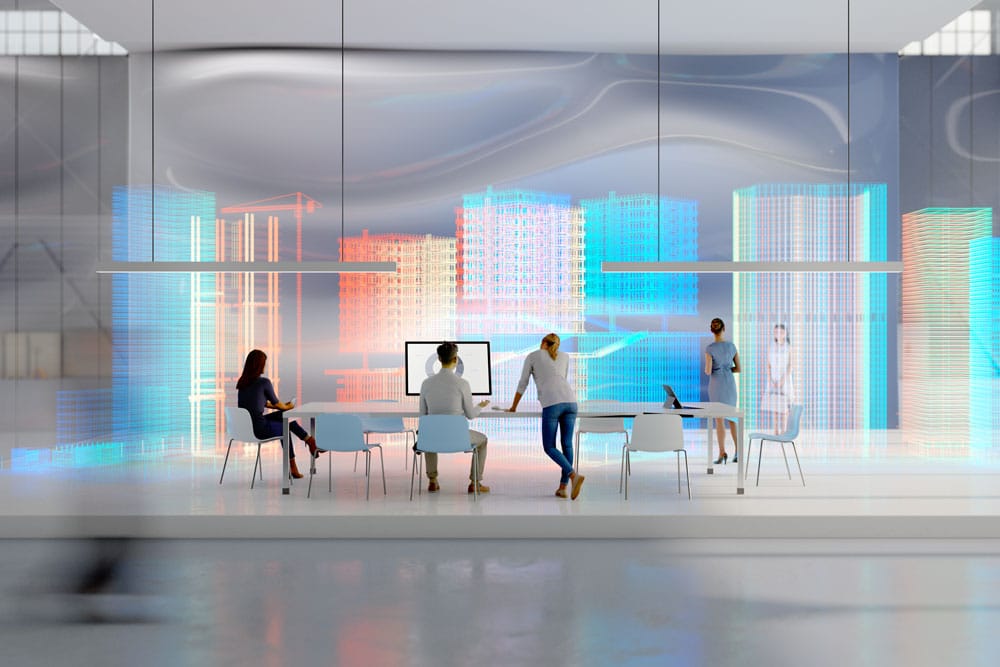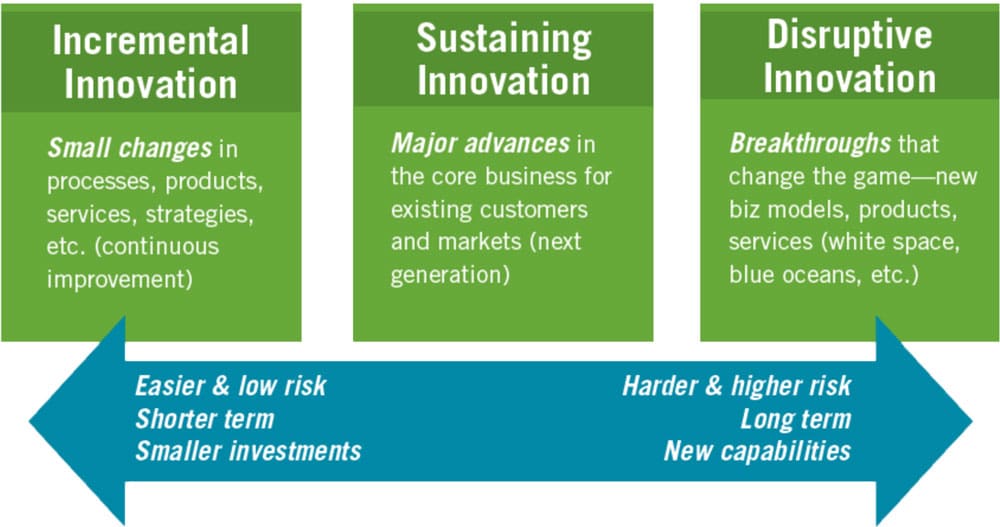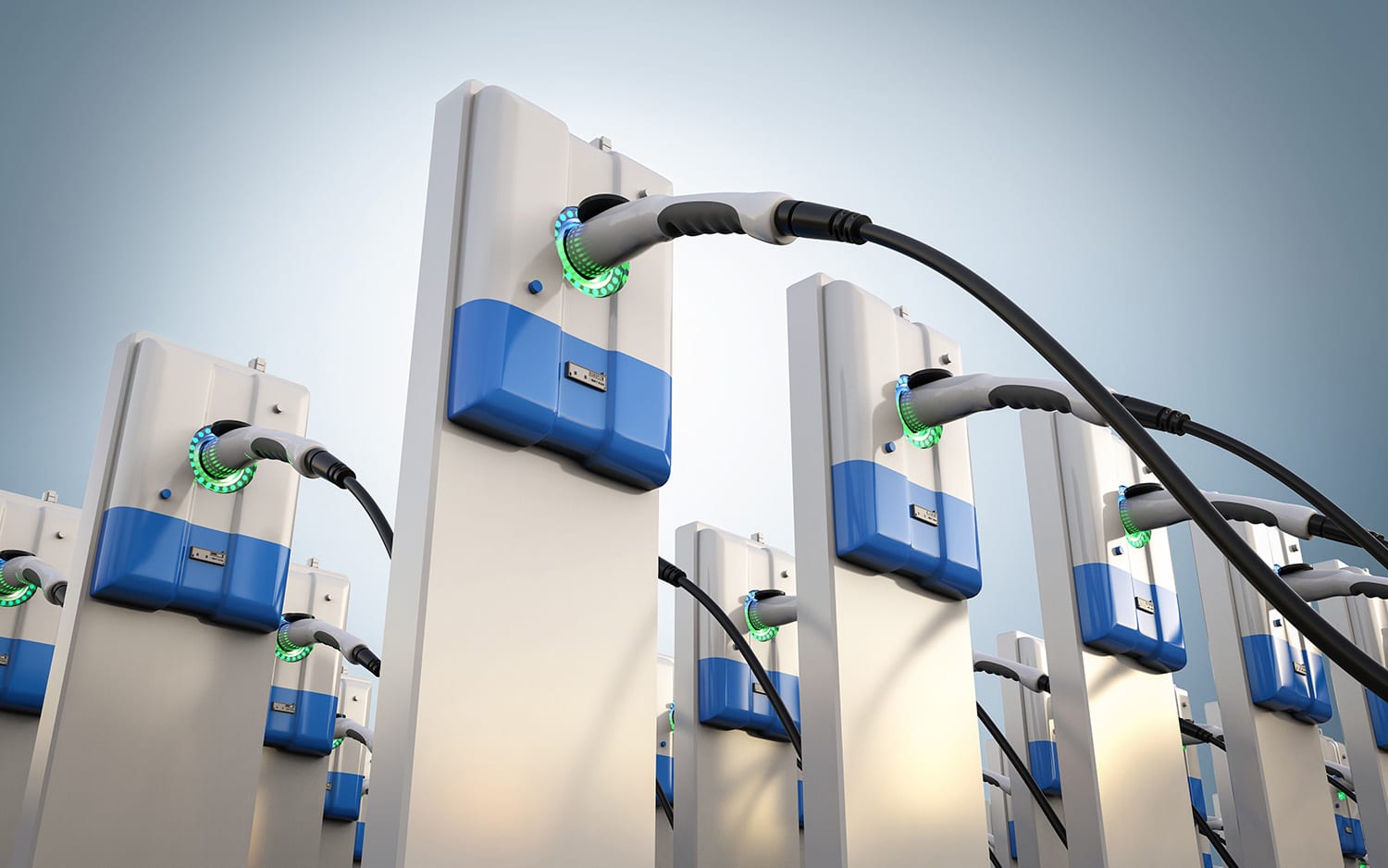A Focus on Incremental
Innovation Strategies
for the Parking &
Mobility Industry
A Focus on Incremental Innovation Strategies for the Parking & Mobility Industry

When we talk about innovation in the parking and mobility world, we are usually referring to disruptive and often technology-based innovations.
Disruptive innovations are simply a small part of a much larger machine. In fact, most of the innovations in our industry are much more mundane and incremental in nature. While a given firm may have originated from a disruptive innovation they brought to market, their ongoing success is ultimately based on incremental innovations to that original disruptive innovation. Companies evolve accordingly, and their focus becomes the ongoing improvement and feature updates to the product based on their clients’ and customers’ needs, feedback, and changes in the parking environment.
Given how important this is to the success of an organization, it is crucial to understand what incremental innovation is, how it works, when to focus on it, and when not to.
Table of Contents
What is Innovation?
There are four types of innovation:
1. Disruptive Innovation:
Occurs when new entrants challenge incumbent firms, often despite inferior resources. The main defining point of a disruptive innovation is targeting population segments that have been overlooked by the competition; and delivering a sometimes inferior but often more tailored alternative, and essentially at a lower price. Eventually these innovations gain market share and move upmarket. Existing advantages are a mainstay, but then mainstream customers’ wants are added. The best example in our industry is the introduction of a Digital Based Business Plan. A digital business model is the method used to generate revenue from a website or mobile app. There are so many parking operators, PARCS providers, payment processors, and parking services that would have no business without the technologies and capacities of the internet. The sheer number of parking apps and websites that offer parking reservations are a prime example of how this business model has exploded in our industry and given customers more choices.
2. Radical Innovation
Occurs with an invention that eliminates or supplants an existing business model. It effectively blows up the existing system or process and replaces it with something entirely new. A prime example of this in our industry is cloud storage. Every company in parking and mobility is directly or indirectly collecting massive amounts of data.
3. Sustaining Innovation
Occurs when the innovation improves existing products. It does not create new markets or value markets, but develops existing ones with better value, allowing companies to compete against each other’s sustaining improvements. An example of sustaining innovation in our industry would be mobile and online payment processing, whether it be paying for parking using the SMS (texting) function on a phone, or through downloading an app. This has improved the existing payment process. Another great example is Automated Vehicle Identification, which has improved the process of recognizing authorized versus unauthorized parkers, whether through RFID, Bluetooth, or license plate recognition (LPR).
4. Incremental Innovation
Occurs when minor improvements are made to existing products, services, processes, methods, and even the companies that deliver these innovations. The evolution of the parking meter is a classic example of this type of innovation in the parking world. We’ve come a long way since the first parking meter in 1935, a turnkey mechanism for a single space that accepted a coin (only), vs. that of today’s modern multi-space meters that accept coin, cash, credit cards, validations, tokens, etc. Most organizations do some sort of incremental innovations, as they make changes that create value and employ some element of novelty. These types of changes do not require big leaps in technology, however, and usually they do not make much of an impact to the marketplace.

Incremental Innovation—Underappreciated!
Incremental Innovations are often underappreciated because a single incremental innovation is not that exciting. However, when you combine the effect of making a hundred of these incremental changes every year, the difference is profound.
Think of these examples:
- Gillette, which started off with a single blade product, has evolved to multiple blades with different features, including how it curves to one’s face.
- Coca-Cola, a 130-year-old American behemoth that’s managed to stay relevant with brand line extensions such as Cherry Coke, Coke with Lime, Coke Zero, and recently Coke Vanilla Orange – they even tossed away the caffeine in one or two iterations!
- M&M’s, which started off with plain M&M’s, then came peanut, and now there is white chocolate, brownie, and many more flavors.
Another underappreciated incremental innovation in the parking industry is related to how parking payments are facilitated and processed. With myriad ways to pay, including via hardware, software, and apps (e.g., pay on foot stations, multi-space meters, apps for advance-reservations, mobile payment solutions etc.), it has become somewhat difficult to find a standalone solution that works for everyone. For example, City A uses mobile payment app Alpha, and City B uses mobile payment app Delta. Parking customers visit both cities, and the cities want to make it easy for their customers to pay. A natural incremental innovation may be a move to a multi-app environment, and/or to offer an app-free solution. “Voila” we started seeing these trends and offerings, and the app-free payment solution was introduced and has become a mainstay.
Incremental Innovation—Time to Focus
Not innovating or improving is a guaranteed way to lose any competitive edge. Based on this, how much time should be focused on incremental innovation rather than other types of innovation? The 70-20-10 rule, first introduced by then Google CEO Eric Schmidt, is a simple rule for allocating resources. The basic principle behind the rule is that an organization should spend 70% if its resources on incremental innovation of the core business, 20% on innovations that help to expand that core, and 10% on the more transformational kind of innovations that help create new businesses.

It is also important to consider:
Scale: The bigger the scale of operations, the more financial sense it makes to go the route of incremental innovation. Example: You currently invest a week’s worth of effort on a simple process innovation that automates five minutes of work managing tasks associated with monthly parking administration (e.g., adding/deleting parkers, updating contact information etc.) Assume you have 10 employees affected by this improvement. That investment would pay itself back in 10 weeks. However, with 1,000 employees, the investment pays itself back in less than half a day. While the 10-employee example is not a spectacular ROI, the 1,000-employee example is an absolute no-brainer. Imagine if this time could now be spent marketing the garage, training staff, improving cleanliness, faster monthly reporting, zero account receivables, ability to close out books faster, etc.
Maturity: Whenever a new product, service, or business is launched there are constantly changing assumptions and unanswered questions. Due to this, there are at lest a few significant changes that must be made to make the product, service, or business model succeed. This is not the time to focus on incremental changes. Since you are not at scale yet, and do not have any measurable success yet, an incremental change will have very little impact on the process. You will not see a return on the investment of the innovation and in many cases, the improvement might be redundant as well if the product, service, or business model needs to be changed in a significant way.
Where to Start Your Innovations

- Look at current challenges/bottlenecks in your organization, products, services, or business plan.
- Move fast and get quick wins. This will help to encourage support for the initiatives and will inspire others to embrace the process. It can also help to develop solutions and secure investment or the backing of management and owner.
- Separate but together. To succeed and not get derailed by your own inner bottleneck, each department or business unit must be responsible for their own incremental innovation for it to work. Be careful not to create silos. Remember, we are all in this together. It is vital that each department or business unit share tools, experiences, and best practices between each other.
- Frequency is important. The rate of improvement in an organization that innovates on a weekly, monthly, or quarterly basis is incredible compared to organizations that innovate annually.
- Look for this same philosophy in your supplies, subcontractors, and services you outsource. They are as much a part of your team and the business process, product, or service, as the team itself. If they are not doing implemental innovations, then this is one more area that can slow down your ability to continuously improve and gain market share.
Remember to Look Back
Incremental innovations increase your chances to react to changes and discover new opportunities. They can also help foster a competitive advantage that allow you to build better products and services for your customers or even yourself. However, it is important to remember to take a moment and look back at what you have accomplished in the last quarter, year, or two years, so that you can see the progress, and that the differences are a far cry from where everything started. When you are making these incremental innovations, it’s easy to forget or see how much progress has been made.
*This information was first presented as a webinar and can be purchased for viewing from the IPMI On-Demand Education Library. Click here to purchase.
-
Katherine Beaty, CFEhttps://parking-mobility-magazine.org/author/katherine-beaty-cfe/February 3, 2022
-
Katherine Beaty, CFEhttps://parking-mobility-magazine.org/author/katherine-beaty-cfe/June 16, 2022
-
Katherine Beaty, CFEhttps://parking-mobility-magazine.org/author/katherine-beaty-cfe/December 16, 2022

Seven-Generation Decision-Making
A major factor of sustainability is thinking about how we

Ready, Set, Plug-In
EV Readiness Perspectives

What “green” practices can we expect to see more of in the next five years?
Aside from electric and automated vehicle use, what “green” practices







